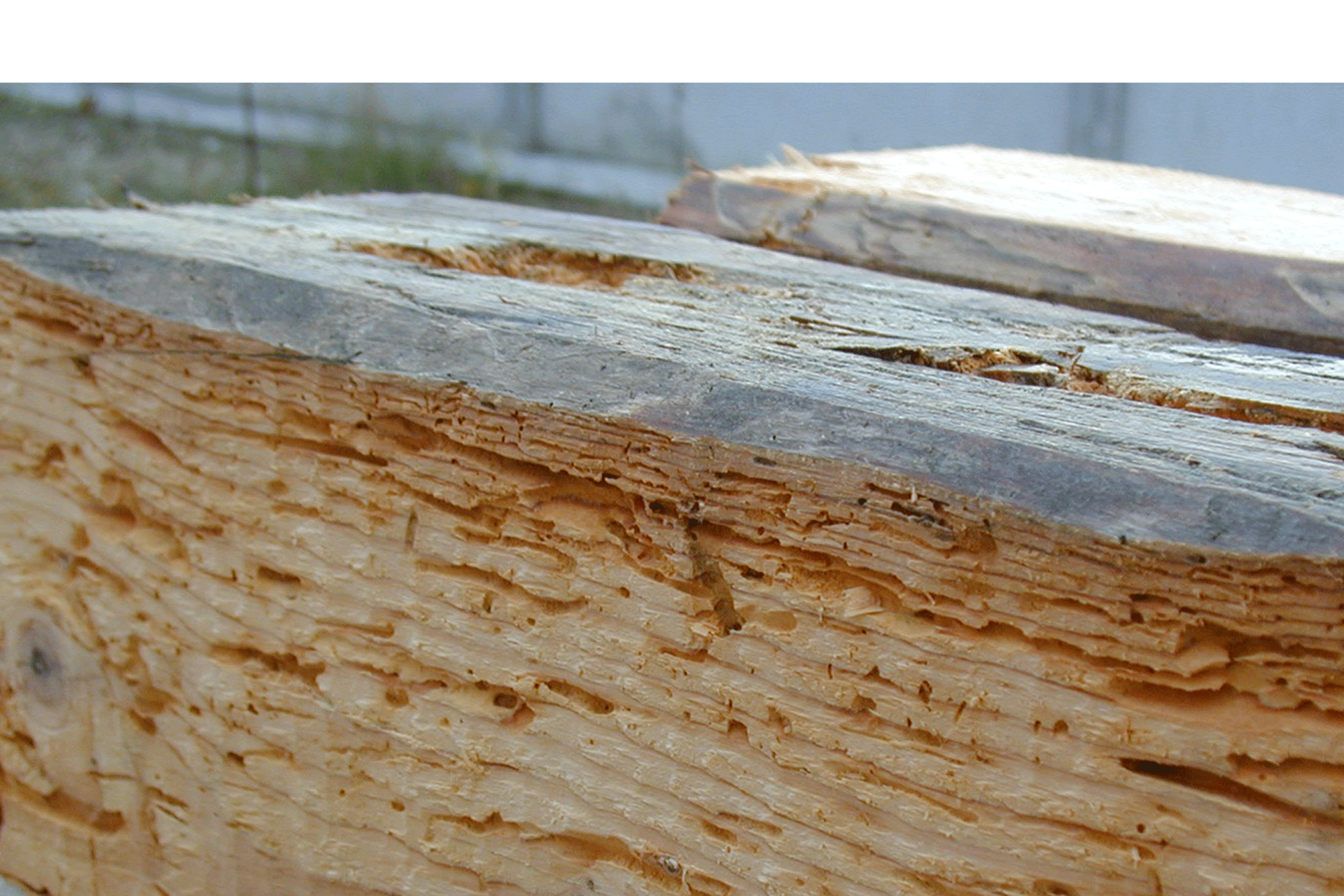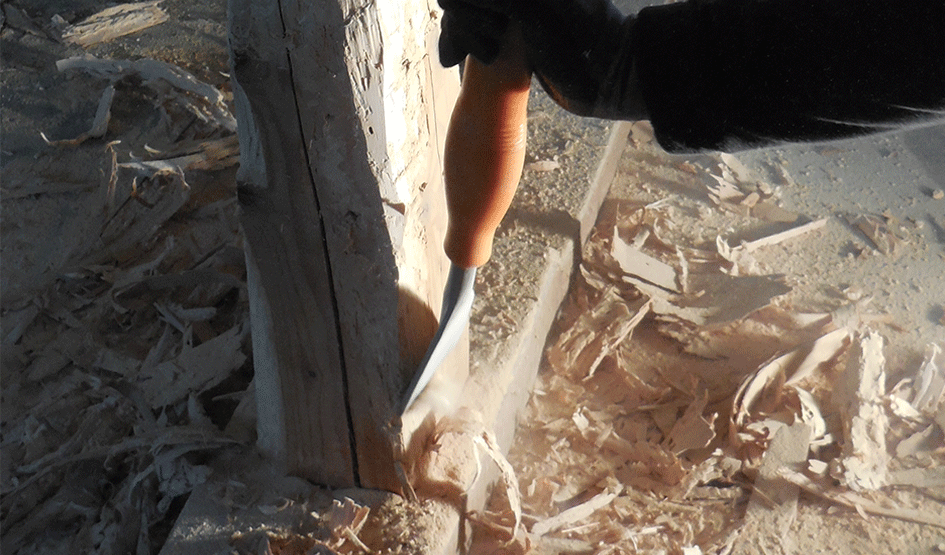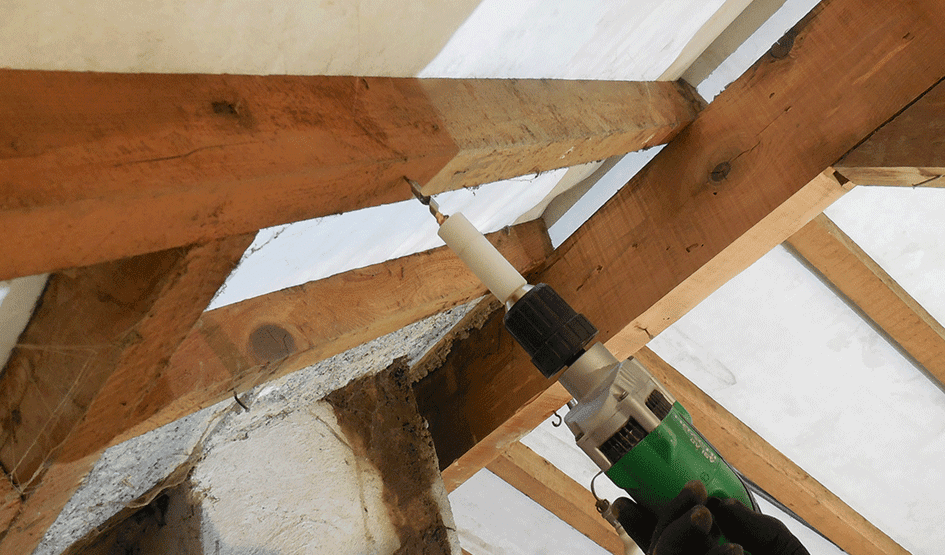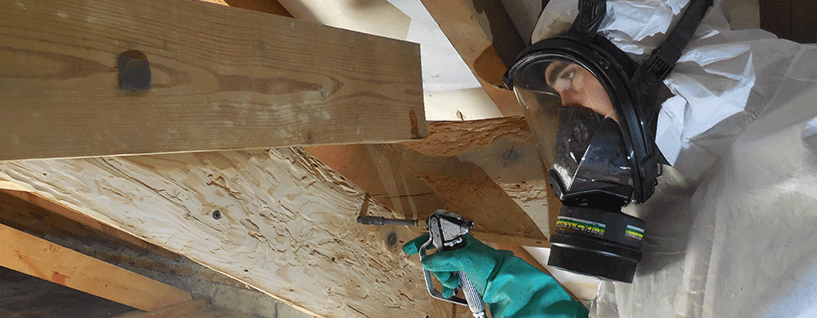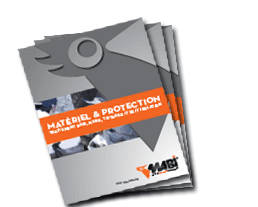Treatment wood-boring insects
TO TREAT WOODWORMS IN A STRUCTURAL WOOD-FRAME, IT’S SIMPLE & EFFICIENT!
Wood destroying insects (WDI) can attack the timber of your property.
Improve the life expectancy of your timber against woodworm with the professional MABI® range, treat in-depth, for lasting results.
What is a Wood boring beetle?
The wood borer life cycle:
Infestation is caused by insects laying eggs in cracks and crevices of exposed wood. These eggs become larvae, the wood worms, that burrow into the wood to feed, mostly from starch, which reduces the wood to powder-like consistency. Signs of woodworms can be detected mainly by the emergence or exit holes as soon as they reach adulthood and by the frass (wood bore dust) near the holes.
Hidden larvae cause most of the damage!
Each beetle has a preference for a type of wood (hardwood or softwood), can attack sapwood and/or heartwood and the size & shape of the exit holes will help you to identify the beetle family and perform the best Powderpost beetle treatment.
In Europe, the most common Wood destroying beetles infesting converted timber in buildings we deal with are from the genera ANOBIIDAE (Common furniture beetle), LYCTIDAE (Powder post beetles – Lyctus) and CERAMBYCIDAE (House longhorn beetle – hylotrupes bajulus).
As the common names of woodworms could be different in your country, and Powderpost beetles can apply to different species, please check also the scientific name to make sure it is the wood boring insect you found in your built environment.
House longhorn beetle
How to recognize a house longhorn beetle (Hylotrupes bajulus)?
What does Hylotrupes bajulus woodworm look like?
The house longhorn larva has a white / ivory color with a maximum length of 25mm. Its life span is beetween 3 to 10 years, feeding in the sapwood of the softwood infested causing extensive damages on wood.
When the larvae become adults, the color changes to black or brown with a length of 10 to 20 mm and a life span 15/25 days.
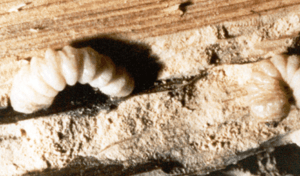
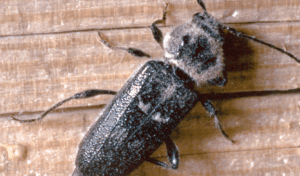
How to recognize the damage of the house longhorn beetle?
The larva digs its gallery in the outer layers of the wood.
Look for packed frass with small cylindrical pellets.
How to treat house longhorn beetle in structural roof timber? See our method below.
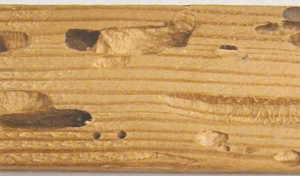
Common furniture beetle
How to recognize the common furniture beetle (Anobium punctatum)?
This insect is close to the house longhorn beetle, but its larva lives exclusively in hardwoods (oak, poplar, walnut ..).
The larva is white, creamy, 5-7mm long.
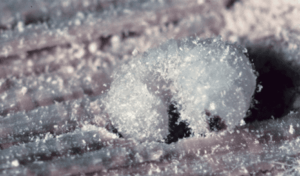
Adult, it becomes brown between 2.5 and 5mm long.
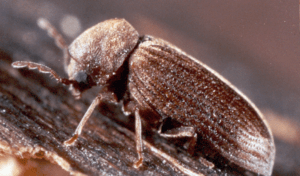
How to recognize the damage of the common furniture beetle?
How to treat the furniture beetle insects present in the framing timber? Look at our method below.
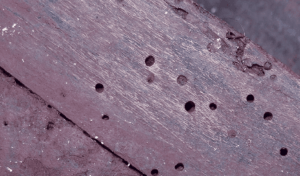
How to treat the woodworms in the framing timber and structural wood beams?
What you need to get rid of wood boring beetles in wood and timber:
- Wood drill bits
- Mabi injectors diameter 6.5 or 9.5mm (injection plug)
- Mabi pump with an injection tip and spray nozzle
- Insecticide / Biocide to kill woodworms
- Personal Protective Equipment (PPE) (
After the identification of the woodworm specie and the extent of the damages, the wood boring beetle exterminator will perform an effective woodworm treatment.
Scrap
This stage’s aim is to get rid of the worm-eaten parts and to see the sound wood.
It has to be done with a manual scraper. For painted woods, you have to use an abrasive disk.
Without doing this stage, sprayed wood preservatives would stay on the wood’s exterior surface and not penetrate it.
Brush and drill
Then the scrapped parts have to be cleaned with a metallic brush to eliminate the dust and frass.
Drill 3 to 5 holes per meter with a Wood Auger bit, in a horizontal line or in staggered
rows depending on the wood section. 2/3 of the beam thickness is the depth to respect.
For very large sections of wood (> 20/20 cm), the holes are made on the two opposite sides of the wood pieces.
Inject
The aim is to create, inside frame parts, insecticide active zones to eliminate larvae of Powderpost beetles which cannot be reached by a surface treatment.
- Drive in the plastic injectors with a hammer.
- Inject the woodworm killer solution between 5 and 15 BAR until saturation by using a
gun and an injection nozzle combined with a MABI pump
The Mabi injectors prevent wood preservative chemical backflow to enhance the spreading inside timber.
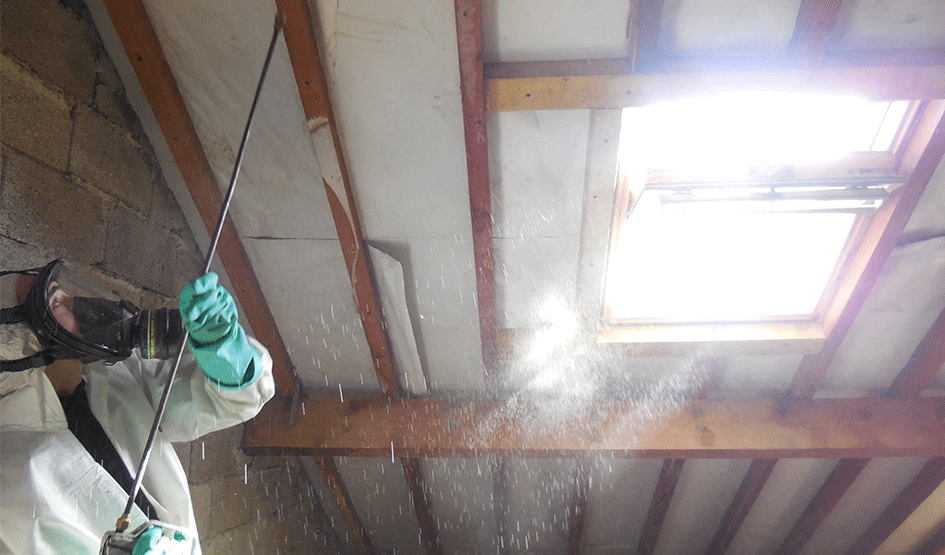
Spray
Finally, adapt a spray nozzle to your gun to spray the woodworm insecticide over all wooden surfaces between 20 and 40 BAR.
You will destroy all larvae and adults Powderpost beetles surrounding and get lasting protection against future attacks of woodworms.
Combine this approved method with an insecticide, for example Corpol (Quimunsa), Xilix 3000P (Adkalis) or any other brand labelled for this pest in your country.
Increase the efficiency of your wood bettle treatments and your safety with MABI injectors, a backflow-prevention system.
And save your property and its structural wood from destructive woodworms.
What is the cost of a remedial wood destroying beetle treatment?
Instead of a Do It Yourself woodworm treatment, MABI advises to ask a Pest Control Company to help you kill your wood destroying beetles. Contact us if you want us to help you find exterminators and timber preservative companies near you.
The methods are given for information purposes only.
Always refer to the local legislation and to the chemical manufacturer’s label before starting any job.
Always wear the Personal Protective Equipment (PPE) required and officially approved for chemical handling, including gloves, coverall, respirator and protective eyewear.

